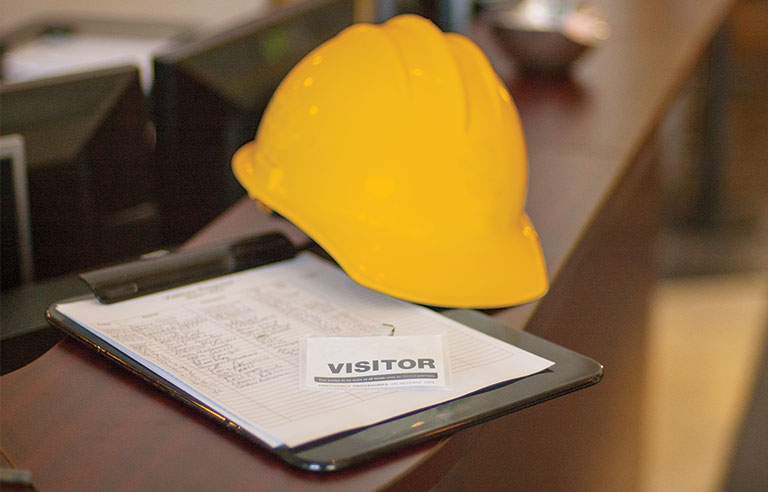OSHA is an ocean that can wash your business away. OSHA launched more than 33,000 inspections during FY 2019.
An OSHA inspection is no laughing matter. You can face hefty fines and damage to your company’s reputation. You must understand how an inspection works well before you are faced with one.
When does OSHA inspect a business? What type of OSHA inspection is conducted, and what happens during an OSHA inspection? What penalties can your business face?
Answer these questions and you can swim against the fierce current of an inspection. Here is your quick guide.
Triggers for Inspections
There are several reasons why OSHA may want to inspect your business. OSHA likes to keep to a schedule for inspections, investigating businesses once a year or so. An inspection may be a routine practice.
But OSHA may prepare an inspection ahead of schedule after receiving a complaint. An employee may have reported an unsafe practice or a significant act of negligence.
In particular, OSHA will inspect a business that presents “imminent danger” situations. These are situations that can cause death or disabling injury immediately. A workplace fatality or an accident that caused an amputation will also lead to an inspection.
The organization can also launch a follow-up inspection. They do this to see if a company is complying with recommendations after an accident.
When you receive notification of an inspection, you should not assume one reason or another for it. You should get ready for the inspector’s arrival by preparing important documents and talking to affected employees.
The Opening Conference
When an inspector arrives on-site, they will ask to go to a conference room. You should go there with senior managers and legal counselors. Employee representatives must be at the conference, and they can request a separate and private conference.
In the conference room, the inspector will explain the reason for the inspection. They will not reveal the names of whistleblowers, but they will talk about everything else. They will describe what the scope of the investigation will be and what they would like from you.
The inspector may ask to see important documents right away. Plans for injury and illness prevention and injury and illness logs are especially important.
You should bring these documents to the conference, even if the inspector doesn’t ask for them. You can use software like KHA Online SDS to organize and present your information.
It is your legal right to refuse the inspector’s entry and ask them for a warrant. But the courts rarely deny OSHA a warrant to inspect a facility. OSHA may think you have something to hide, which can make the inspection more severe.
The Walk-Around Inspection
Once the conference is over, the inspector will ask to walk around your facility. You must let them do so.
You or another company representative can accompany the inspector, as can an employee representative. You can ask the inspector questions whenever you like, but you cannot challenge their work.
An inspector can do many tasks. They can have confidential conversations with employees. They can watch employees while they work, looking out for hazards that may endanger them.
An industrial hygienist may walk around your site. They will look at occupational hazards like chemical vapors and respiratory issues. They may take samples and run tests on them for further analysis.
Each inspection is different. But nearly all inspectors examine posters about workplace safety. If you have not hung up posters that explain employee rights, you will receive a fine.
The inspection process can take a long period of time. If an employee is conferring with an inspector, you may pay the employee for their time. You cannot reprimand an employee in any way for talking with OSHA workers.
The Closing Conference
When the inspector feels they have gathered enough information, they will convene a closing conference. Company and employee representatives can attend the conference.
The inspector will discuss the hazards they found during their walk-around. They will suggest ways to correct them, and they will impose deadlines for doing so.
Citations and Penalties
If your company will receive a fine, you will find out about it during the closing conference. You will have an opportunity to appeal, though you have only 15 working days to do so. While you are undergoing the appeal process, you must take steps to correct serious violations.
Within a few days of the closing conference, your company will get a Citation and Notice of Assessment. This is a formal document that describes your company’s OSHA violations. You must notify all employees of the Citation and Notice and correct all hazards as soon as possible.
You may have to pay a fine totaling tens of thousands of dollars. You may also need to buy new safety equipment and implement training classes, which cost money. Find a way to pay for everything.
You should expect a follow-up investigation if your company was accused of serious violations. It can occur at any moment, so be ready.
The Essentials of an OSHA Inspection
An OSHA inspection can upend your business. You may experience one after an accident or employee complaint.
An inspector will convene with important employees and discuss why they are at your business. They can examine documents, talk to employees, and watch company operations. A hygienist can run tests to see if the environmental conditions are sound.
OSHA can give you their results at a closing conference. They can impose expensive fines based on violations. You must take steps to improve safety right away.
Promote workplace safety however you can. Read more workplace safety guides by following our coverage.

Comments